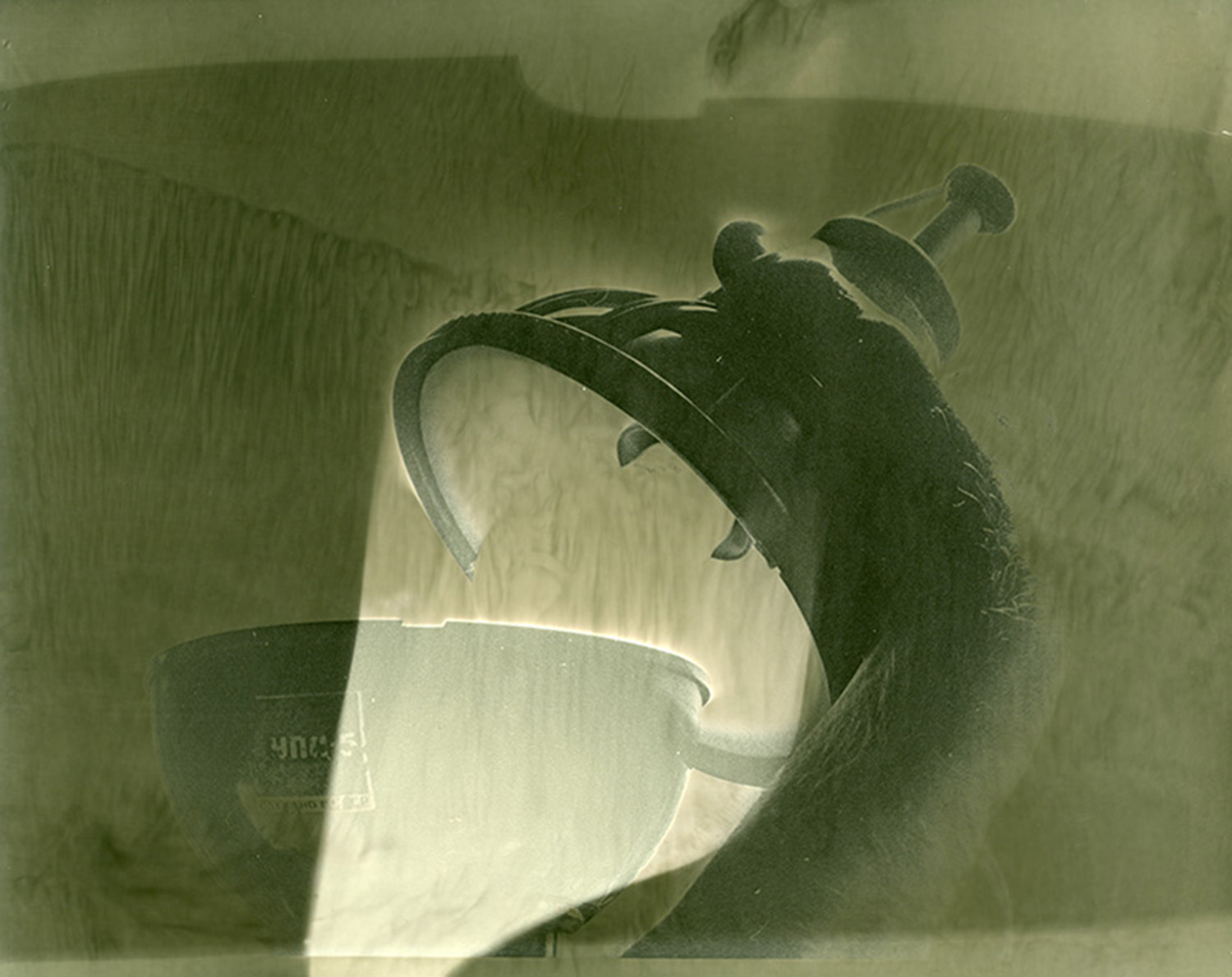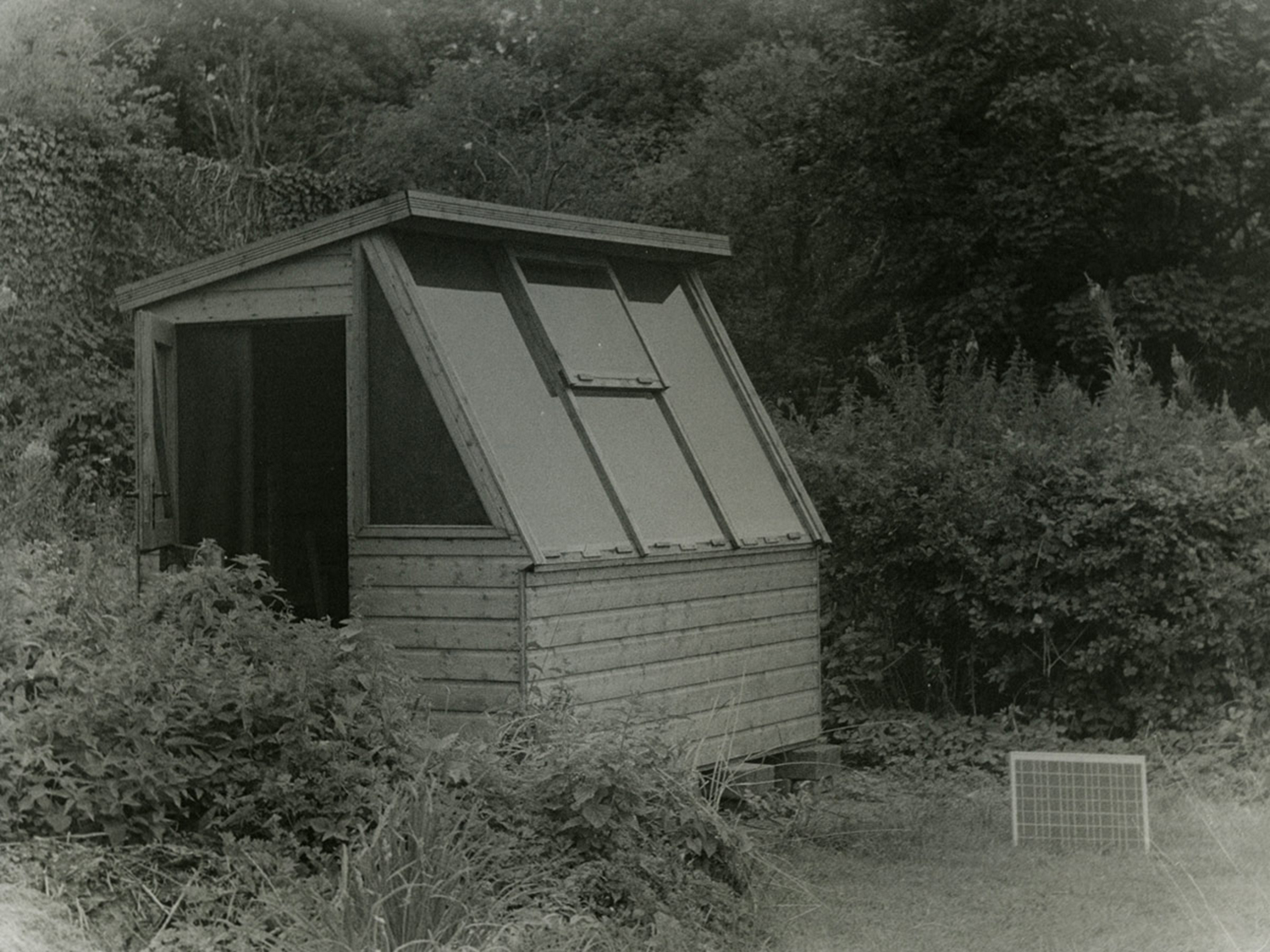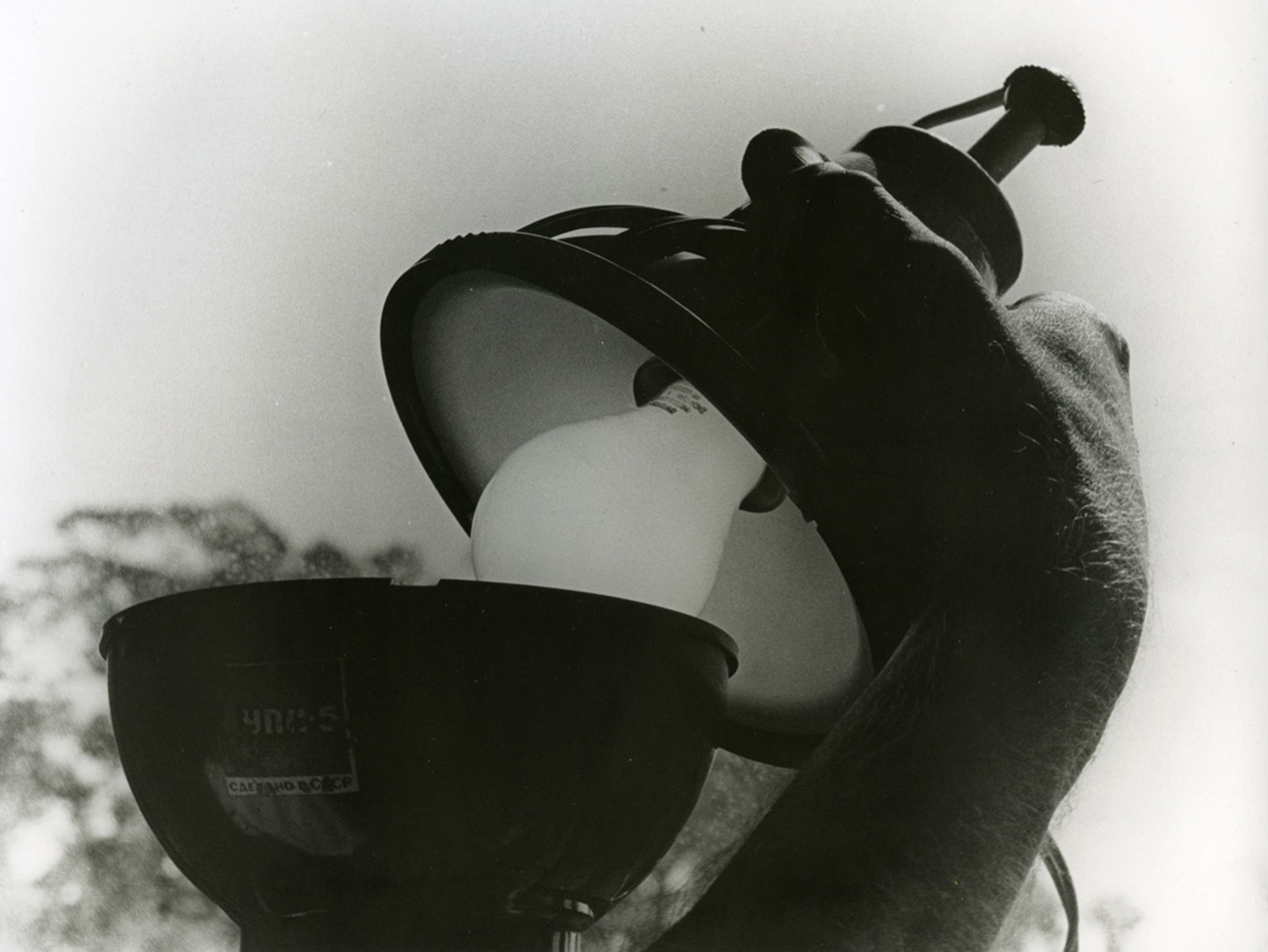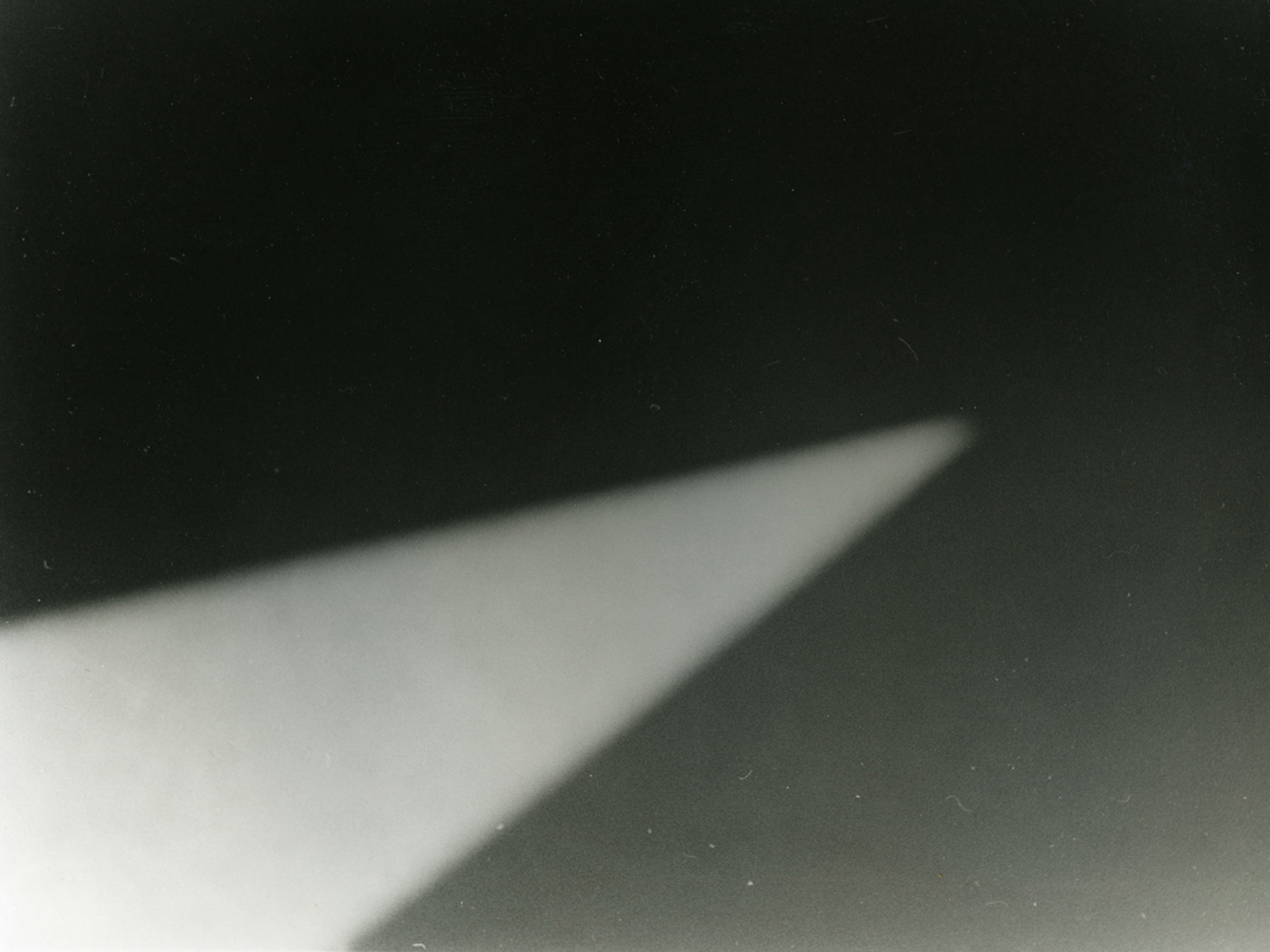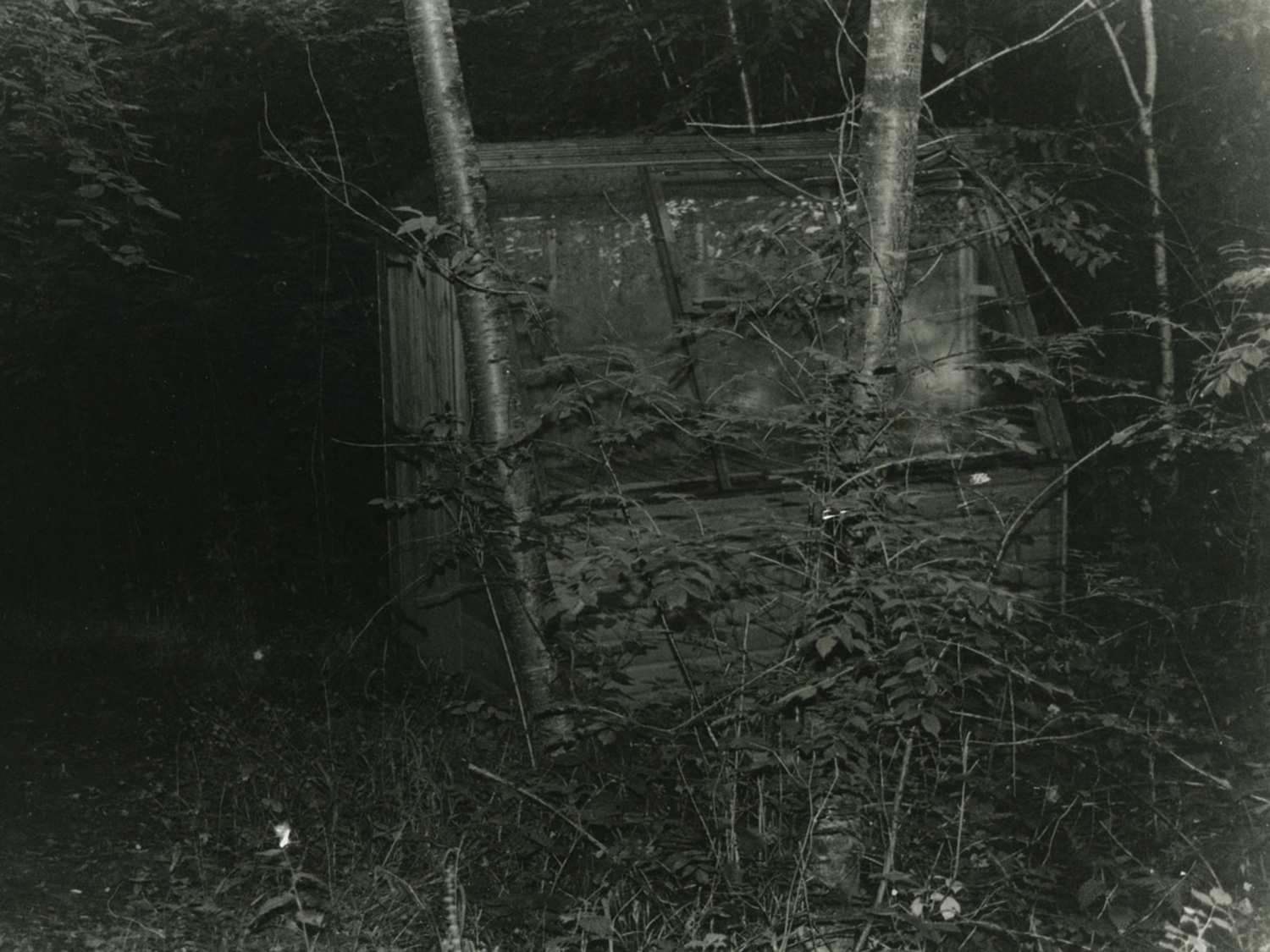solarisation, 2009,
Text by Lyndon Davies
Morag Colquhoun’s shed has been around. She built it in the wood across the road from where she lives, a wood which she learned was about to be violated by that great tearer and tamper of landscapes, the National Grid gas pipeline. As the diggers approached, the shed sat in the dingle, not making a fuss, just lightly making its attention felt; a reminder of a different kind of relationship with the world’s surface than one based on the abstraction of mere utility. An abode, perhaps, a benevolent sentry-box. Colquhoun lined it with sheep’s wool and invited people in to have conversations, which she recorded.
Gradually, the shed seemed to grow into the wood. When the time came to shift it, every part of it seemed to have sunk immovably into the intimate sockets of the place, so completely had it identified itself with its location. Despair loomed, but Colquhoun called on her friends. It required persuasion and muscle to ease the shed out of its fanatical devotion to that oblong of earth and bark, but finally it relaxed its grip and entered into the spirit of its new incarnation.
A spot had been cleared of Rosebay willowherbs and the shed was re-erected in the walled garden at Penpont. A solar panel was set up, connected to the shed by means of a single electric rubberized domestic flex. This electrical input was intended to run a small dark room, in which Colquhoun would develop, in the old-fashioned way, photographs documenting the history of the shed. Just enough electricity to run an enlarger and a lightbulb – not much to ask of a massively seething and spitting ball of energy 90 odd million miles away in outer space.
First, though, the shed must be insulated and rendered light-proof: this wooden box leaked light and draughts like a colander. Every gap must be carefully plugged; every crack, warp, flaw, nail, screw and knot-hole had to be covered up to ensure total darkness within. The temperature had to be kept high enough for the chemicals to do their mysterious work: any less than 21 or 22 degrees and the elemental fluids are lacking in alchemical gusto.
Warmth then, and the critical darkness that keeps the whole thing fecund. This delicious, worrying, implosive darkness. The shed, in fact, had to become a container of darkness, a darkness so complete that to enter it and to close the door, would be to step into an entirely different mode of being, the space of the undeveloped, the hypothetical, the intimately remote. In darkness you’re already moving through your own dream, the reality of things is moot, your uncertain body has to learn all over again how to find its way, to fit itself into the niches prepared for it. Mainly it’s down to the hands: now it seems that everything your fingers took for granted has become a task, just to find their way through the ratchets and spools of a common or garden camera suddenly becomes a matter for the utmost attention and application.
The shed has become a factory, driven like everything else, by the fundamental forces of the universe; like nature, like everything else, but in a particularly naked, endearingly humble and forthright way. The little shed with its puny electric cable sticking out gives itself, like a plant, to the sun, gorges deep on the sustenance of its fiery elixirs. To produce what? The delicate records of a human action, that’s all, the ordinary unfolding of a human presence, of an ordinary human engagement with the real. From darkness to light into darkness into light; invisibility to appearance, instantaneity to duration, the process ritualized by a series of baptismal immersions in the ordinary chemicals of transformation.
A factory, then, but also a place of mystery, a place for the production of mysteries, a secular home-made temple. Maybe, maybe that – it depends on how you see it. A ritual-site, an alembic, or just a workshop: it depends on how you take it, the shed does not insist. And neither does the artist, Morag Colquhoun, who built the shed. There is no insistence here, just a calm but minutely structured attentiveness to moments of existence, which, might, in other circumstances barely have impinged on the radar.
That final photograph – just a blank with a scratch on it, a failure, but still a record of something having happened, of something having come and passed beyond the bounds of seeing. Proof, and in a small way, consecration of just another unimportant and utterly vital human occurrence.
